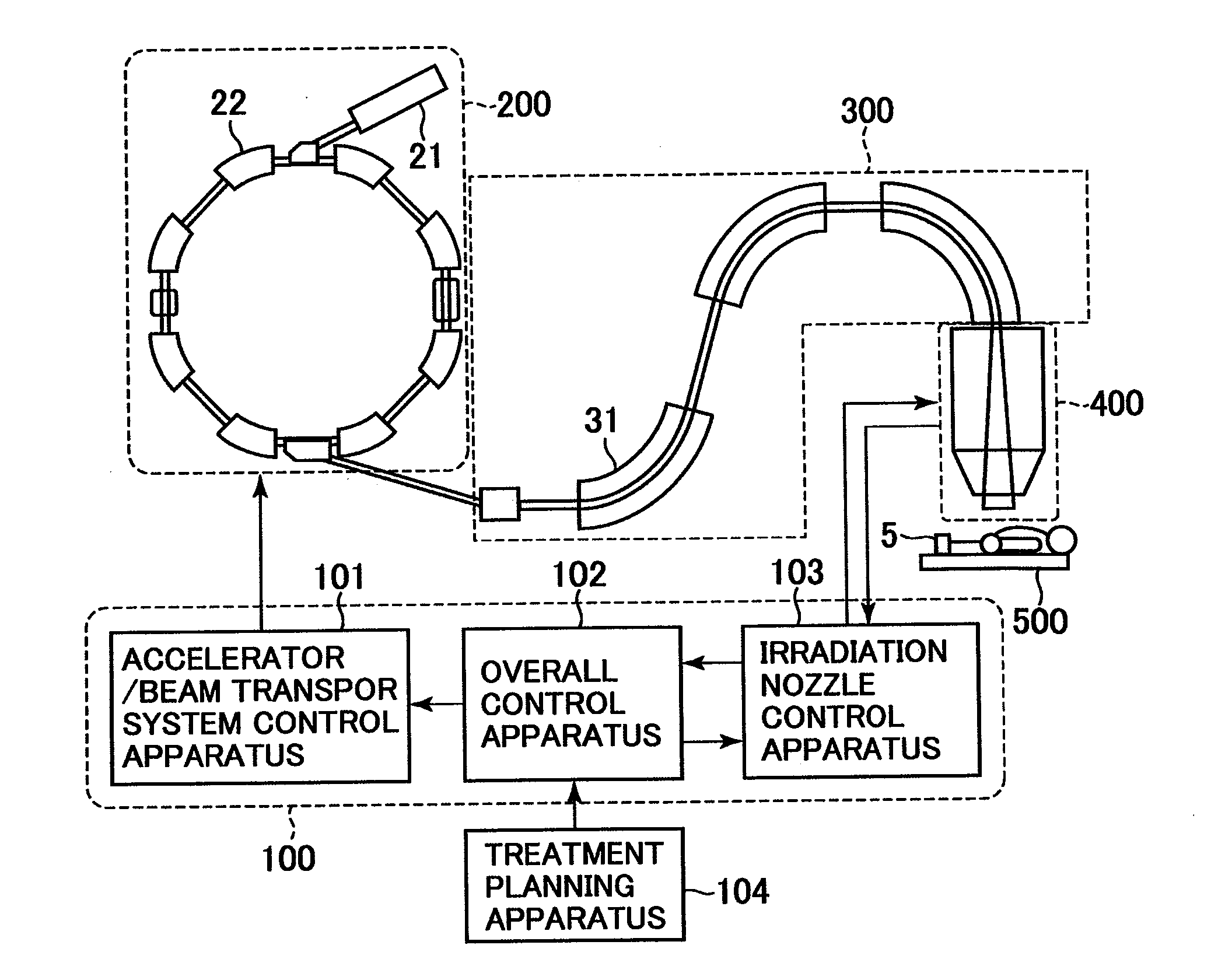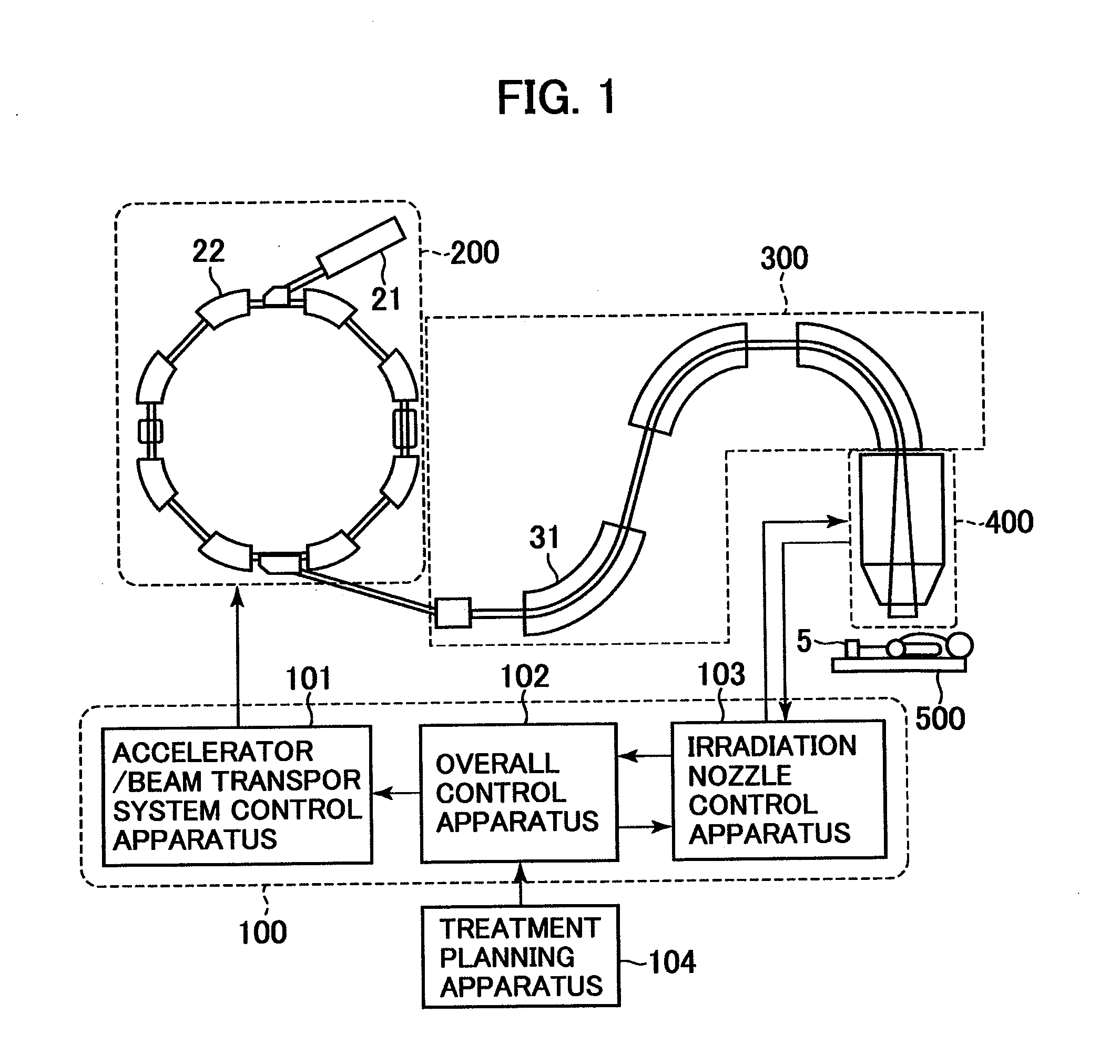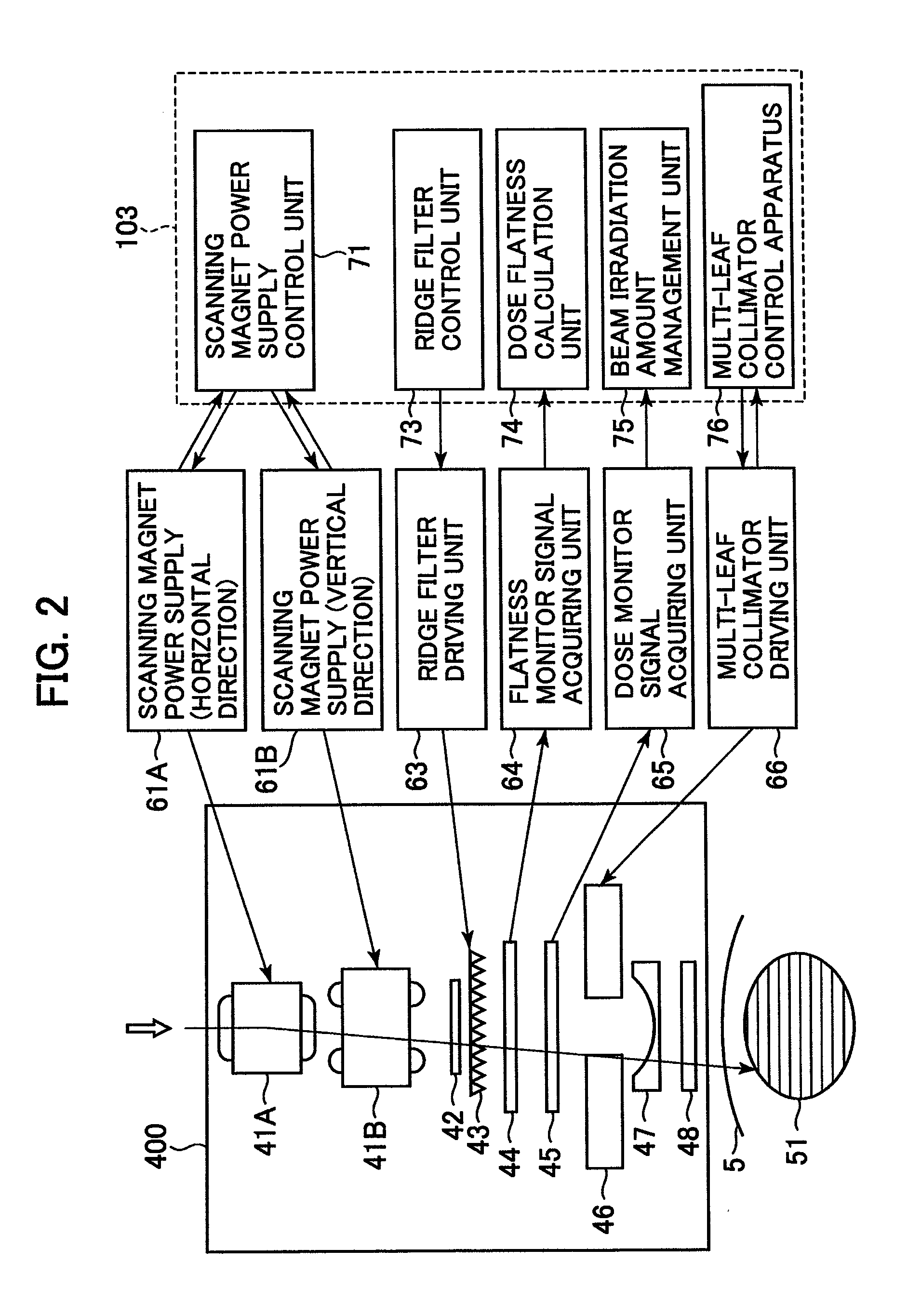Treatment planning apparatus and particle therapy system
a treatment planning and particle irradiation technology, applied in radiation therapy, x-ray/gamma-ray/particle irradiation therapy, radiation therapy, etc., can solve the problems of long large loss of charged particle beams, etc., to reduce the time necessary for irradiation, reduce the irradiation of parts, and shorten the scan path
- Summary
- Abstract
- Description
- Claims
- Application Information
AI Technical Summary
Benefits of technology
Problems solved by technology
Method used
Image
Examples
first embodiment
[0081]A first embodiment as a preferred embodiment of the present invention relates to a case where the irradiation is conducted by performing the raster scan in the lateral directions in the uniform scanning. FIG. 20 shows a raster scan path in the conventional uniform scanning. In FIG. 20, the hatched area represents the collimator aperture area, the dotted line represents a rectangular irradiation field that covers the collimator aperture area, and the solid line represents the raster scan path 602. The raster scan is started at the starting point shown in FIG. 20, and the X-direction scan and the Y-direction scan are repeated without turning the beam OFF until the beam reaches the ending point shown in FIG. 20. In the conventional uniform scanning, the treatment planning apparatus determines an irradiation field that covers the collimator aperture area and calculates the raster scan path 602 for irradiating the irradiation field with a uniform dose distribution as shown in FIG. ...
second embodiment
[0085]A second embodiment as another preferred embodiment of the present invention relates to a case where the irradiation is conducted by performing the line scan in the lateral directions in the uniform scanning. FIG. 22 shows a line scan path in the conventional uniform scanning. In FIG. 22, the hatched area represents the collimator aperture area, the dotted line represents a rectangular irradiation field that covers the collimator aperture area, and the solid lines represent the line scan path 601. The line scan is started in the X direction at the starting point shown in FIG. 22 and continued until the beam reaches the ending point shown in FIG. 22. This is a one-line irradiation in the line scan. The one-line irradiation is repeated in the Y direction, by which one planar scan is completed. In the conventional uniform scanning, the treatment planning apparatus 104 determines an irradiation field that covers the collimator aperture area and calculates the line scan path 601 fo...
third embodiment
[0089]A third embodiment as another preferred embodiment of the present invention relates to a case where each layer of the layer-partitioned target volume in the conformal layer stacking irradiation is irradiated and scanned in the lateral directions by means of the raster scan. In the conventional conformal layer stacking irradiation, every layer was irradiated using the raster scan path 602 shown in FIG. 7. FIG. 12A shows a raster scan path 602 for the most distal layer (layer 1) in this embodiment, and FIG. 12B shows a raster scan path 602 for the layer 6 situated at a more proximal (shallower) position. In FIGS. 12A and 12B, the raster scan path for the layer 6 is shortened compared to that for the layer 1 since the multi-leaf collimator aperture area is reduced. Each scan path shown in FIGS. 12A and 12B is calculated as the minimum scan path by the treatment planning apparatus 104 after calculating the multi-leaf collimator aperture for each layer of the layer-partitioned targ...
PUM
 Login to View More
Login to View More Abstract
Description
Claims
Application Information
 Login to View More
Login to View More - R&D
- Intellectual Property
- Life Sciences
- Materials
- Tech Scout
- Unparalleled Data Quality
- Higher Quality Content
- 60% Fewer Hallucinations
Browse by: Latest US Patents, China's latest patents, Technical Efficacy Thesaurus, Application Domain, Technology Topic, Popular Technical Reports.
© 2025 PatSnap. All rights reserved.Legal|Privacy policy|Modern Slavery Act Transparency Statement|Sitemap|About US| Contact US: help@patsnap.com



